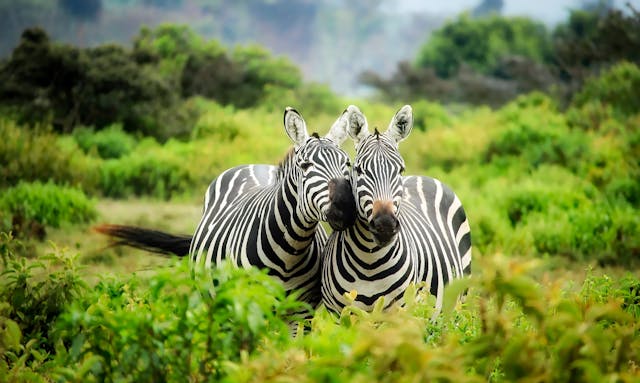America is home to many species of wildlife, and these animals sometimes need assistance when they are in trouble. The adversity that befalls wildlife is frequently caused by humans. It may involve, for instance, a waterfowl injured in an oil spill, young foxes orphaned when their mother is hit by a car, or a species displaced due to urban expansion.
Wildlife rehabilitation organizations seek to address the consequences of human activity on wildlife by rescuing and rehabilitating wild animals and providing a safe environment until they can be returned to their natural habitat. Let’s look at what these groups do that makes a difference.
Background
Rehabilitation centers for wildlife are normally government-run or private nonprofit enterprises. Many wildlife rehabilitation organizations have remained in operation for decades. While they deal with diverse species, the mission of these agencies and groups are the same.
In addition to taking in sick, injured, and orphaned wildlife and giving them the immediate care and nurturing they need, wildlife rehabilitation organizations have a number of other related objectives. Over time, the role of these groups has evolved to include supporting the conservation of endangered species, resolving conflicts between humans and local wildlife, educating the public, and monitoring human impacts on nature. In the lattermost case, this includes climate change, lead ammunition, or the use of pesticides with ingredients toxic to wildlife.
Although wildlife rehabilitation organizations usually deal with native species, there are times when they may take in nonnative ones. These may be mammals, birds, or reptiles who were taken from other parts of the world and sold as exotic pets, used in laboratory research, or kept in poor conditions in private zoos.
Ethical Foundation
Fundamental to the mission of rehabilitative centers for wildlife is that all species are viewed as intelligent, sentient beings. Each rescued animal is seen as an individual deserving of respectful care and attention. After tending to broken wings, bandaging wounds, and completing lifesaving measures, wildlife patients are housed in a comfortable enclosure with proper bedding and their nutritional needs met.
Equally important is the philosophy that patients are treated like the wildlife they are, preserving their wild instincts and avoiding acclimation to humans. In this respect, they are not put on display, tamed, or taught unnatural behaviors. Rehabilitation staff are careful only to handle or interact with the animal as necessary to provide medical care, food, water, and a clean environment.
Nevertheless, there are occasions where an animal is ineligible for return to their home environment. When possible, these individuals become permanent residents of the rehabilitation facility or a wildlife sanctuary.
The Rehabilitation Process
Rehabilitating a wild animal begins with addressing the reason for their rescue. Injured and sick animals receive medical care according to individualized treatment plans, although the extent of care rehabilitators can provide is usually limited. Most US-based wildlife rehabilitation programs are entirely volunteer-operated and rely on donations for funding. As such, treatment options available depend upon the resources and network of each rehabilitation group.
For orphaned wildlife, rehabilitation centers arrange for foster placement until the animal is old enough to care for themselves. Facilities that house healthy but non-releasable wildlife often opt to place orphaned wildlife with permanent residents who can serve as foster parents, with human rehabilitators providing food, water, and care as needed. In the absence of suitable same-species foster parents, rehabilitators tend to orphaned animals’ needs while minimizing human contact.
The rehabilitation process also includes exercise and physical therapy as necessary, as well as a pre-release conditioning program to help prepare the animal for return to the wild. Pre-release conditioning ensures an animal is healthy and capable of surviving on their own.
The Work of A Wildlife Rehabilitator
Typically, wildlife rehabilitation centers depend on a core group of licensed rehabilitation professionals supported by a cadre of volunteers from the local community. The work can be exhausting and heartbreaking at times, requiring quick thinking and a passion for assisting wildlife. The job is more than just rescuing, treating, and feeding animals in distress. It also involves record keeping, facility maintenance, and public outreach.
Aside from managing the needs of the resident wildlife, communicating with the public is where a rehabilitator can have the most influence. Often, people don’t have a full understanding of the work of a wildlife rehabilitation organization. Some may think it’s like a zoo where they can take the family to see wild animals in a pseudo-natural habitat, for example. Educating the public about the role of these centers involves fielding phone calls, making presentations, and taking every opportunity to explain things to friends, family, and acquaintances.
Another aspect of dealing with the public is handling concerned calls from people who believe a wild animal is acting strangely or calming an individual who arrives at the center with injured wildlife. This requires the ability to ask the right questions, give assurance, and take appropriate action. Remaining calm under pressure, familiarity with normal animal behavior, and the expertise to help in an emergency are mandatory parts of the job.
In Closing
Wildlife rehabilitation involves much more than caring for ill and injured animals. These facilities play a crucial role in educating the public, advocating for the needs of native species, and helping to facilitate balance between humans and wildlife.

